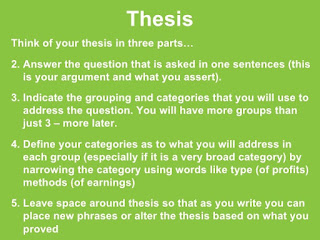The DBQ Essay: Mastering the Art of Document-Based Question Writing
Writing a DBQ essay can be an intimidating task for many students. A document-based question (DBQ) essay requires students to analyze and interpret historical documents and respond to a prompt. However, with the right approach and preparation, mastering the art of DBQ essay writing is within reach.
Understanding the DBQ Essay
A DBQ essay is commonly assigned in history and social studies courses, as it assesses a student’s ability to analyze primary sources and construct a coherent argument based on historical evidence. This type of essay requires students to synthesize knowledge of the topic, critically analyze primary sources, and present their findings in a well-structured and persuasive manner.
The essay prompt for a DBQ typically includes a historical context and a task that students must address in their response. Students are provided with a set of primary source documents, such as letters, diaries, speeches, photographs, or newspaper articles, which they must analyze and incorporate into their essay.
Tips for Writing a Stellar DBQ Essay
- Start by reading and understanding the prompt: Before diving into the documents, ensure that you fully comprehend the essay prompt. Identify the key terms and requirements of the task to guide your analysis.
- Analyze the documents: Carefully examine each document and consider its author, purpose, and historical context. Take notes on important details or quotes that can support your argument later on.
- Organize your thoughts and create an outline: Create a clear and logical outline before writing your essay. This will help you organize your thoughts, ensure a coherent structure, and prevent you from missing key points.
- Construct a thesis statement: Your thesis statement should clearly and concisely express your argument and perspective. Use the evidence from the documents to support your thesis and guide your essay.
- Develop your essay with a well-structured body: Each paragraph should have a clear topic sentence that supports your thesis statement. Use the documents as evidence to support your claims and provide historical context.
- Don’t forget to address the counter-argument: Acknowledging and refuting opposing viewpoints strengthens your essay and shows a deeper understanding of the topic. Anticipate possible counter-arguments and address them within your essay.
- Conclude with a strong closing paragraph: Summarize your main points and restate your thesis in a compelling manner. Leave the reader with a lasting impression of your argument and its significance in the broader historical context.
Final Thoughts
Writing a successful DBQ essay requires practice, critical thinking, and a solid understanding of historical events. By carefully analyzing primary sources and crafting a well-structured essay, you can demonstrate your ability to connect historical evidence and narratives.
Remember, the key is to practice and familiarize yourself with the format and requirements of a DBQ essay. The more you engage with historical documents and refine your analytical skills, the more confident and successful you will become in writing DBQ essays.
So, embrace the challenge and master the art of DBQ essay writing!



No comments:
Post a Comment